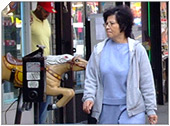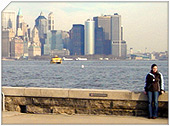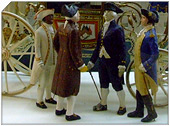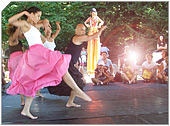Jamaica Estates, Queens, New York City
|
Getting Started
Index
NYC Neighborhoods
Manhattan
Brooklyn
Queens
Bronx
Staten Island
NYC Icons
Chrysler Building
Flatiron Building
Empire State Building
Safe NYC
NYPD
FDNY
NYC Weather
NYC Climate
NYC Weather Forecast
Winter Season
Spring Season
Summer Season
Fall Season
NYC History & Politics
New York City History
Tammany Hall and Politics
New York City Politicians
New York City Personalities
Culture of Gotham City
Culture of the city
Cultural diversity
City in popular culture
|
Jamaica Estates is a wealthy neighborhood in the New York City borough of Queens. The area is part of Queens Community Board 8. It is bounded by Union Turnpike to the North, Hillside Avenue to the South, Utopia Parkway and Homelawn Street to the West and 188th Street to the East. Although technically in the Hollis zip code, many consider the neighborhood bounded by Union Turnpike, 188th Street, Cunningham Park and Grand Central Parkway to be part of Jamaica Estates as well.
Jamaica Estates was created at the turn of the century by the Jamaica Estates Company, which developed the area's hilly 503 acres, while preserving many of the trees that had occupied the site. Jamaica Estates now has significant Jewish American, Italian-American and Asian-American populations. It is considered one of the most expensive and exclusive residential areas in Queens.
The only apartments and multi-family housing lie on the edges along Hillside Avenue. The main shopping corridors include Hillside Avenue and Union Turnpike.
Transportation
The northern terminus of the New York City Subway's IND Queens Boulevard Line (F), 179th Street station, is located at the entrance of Jamaica Estates at Midland Parkway and Hillside Avenue. The neighborhood is also served by the Q17 and Q46 bus lines. Numerous express buses to Manhattan also stop on Union Turnpike. The commute to Midtown Manhattan takes 30 to 45 minutes.
In contrast to much of Queens, most streets in Jamaica Estates do not conform to the rectangular street grid and follow topographic lines, the most notable example being Midland Parkway. Many of the named streets have Anglo-Saxon origins, such as Aberdeen, Avon, Barrington, Chelsea, and Chevy Chase Street. Most of the homes are large single-family homes in the tudor and colonial styles, many on substantial lots, sited on hilly winding streets lined with old-growth trees.
|
New York City Search
Quick NYC
|
|
|
 How safe is New York City?
How safe is New York City? Contrary to popular belief, the City consistantly ranks in the top ten safest large cities in the United States. The NYPD is the largest municipal police force in the world and has it's own Movie/TV Unit. |

New York has a humid continental climate resulting from prevailing wind patterns that bring cool air from the interior of the North American continent. New York winters are typically cold with moderate snowfall.  New York Weather Forecast New York Weather Forecast |

New York's two key demographic features are its density and diversity. The New York City metropolitan area is home to the largest Jewish community outside Israel. It is also home to nearly a quarter of the nation's South Asians, and the largest African American community of any city in the country.  Ethnic composition Ethnic composition |

New York Newspapers
 
|



 New York Weather Forecast
New York Weather Forecast
 Ethnic composition
Ethnic composition


















